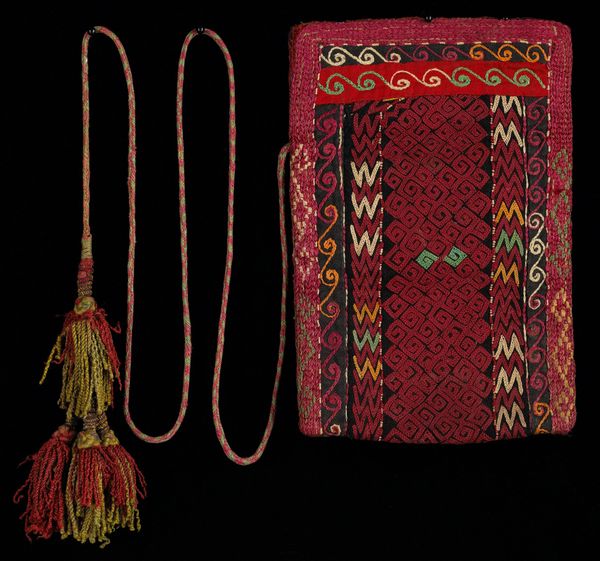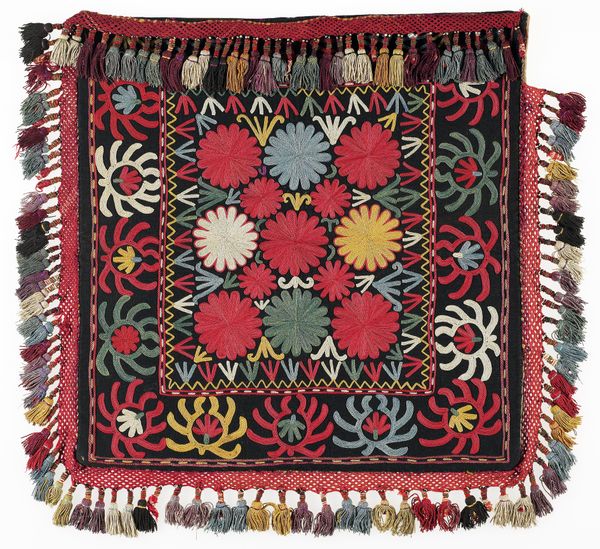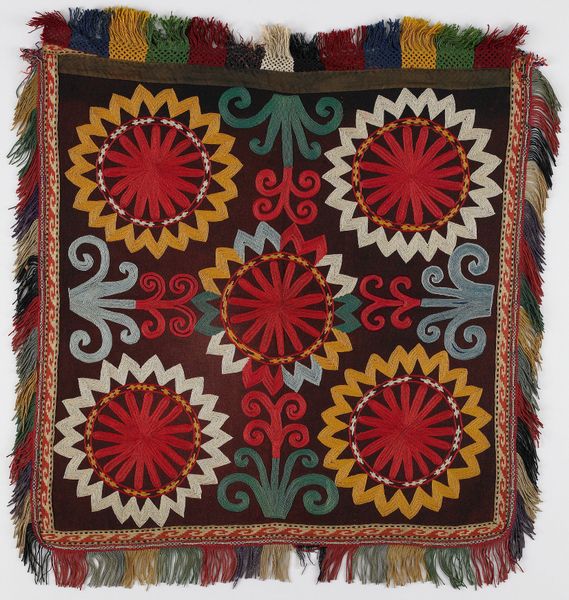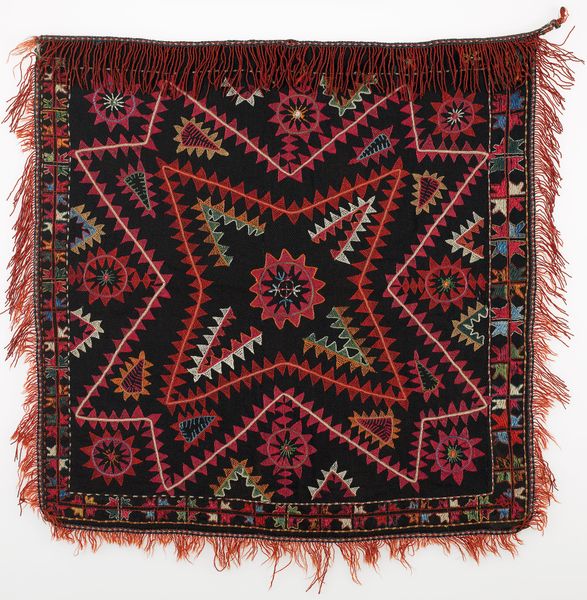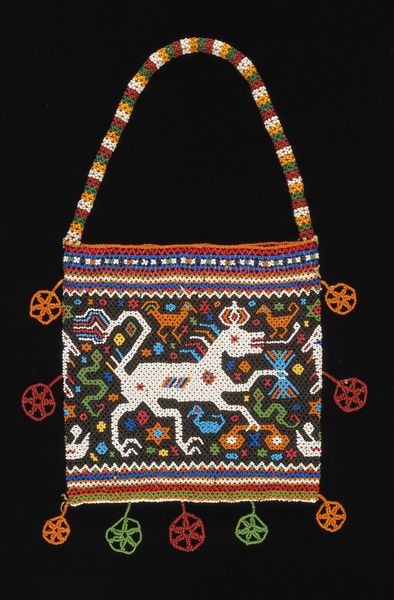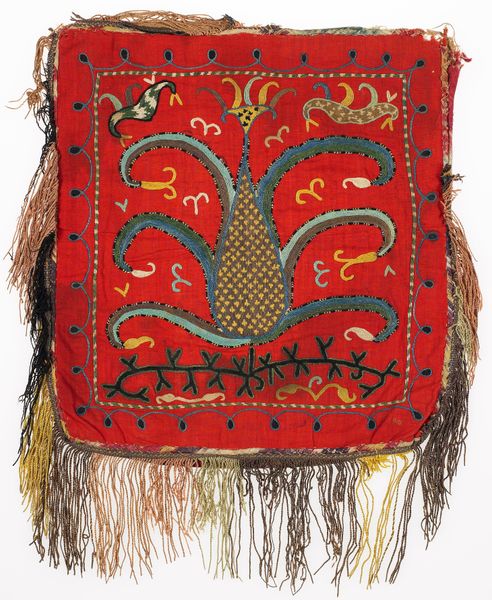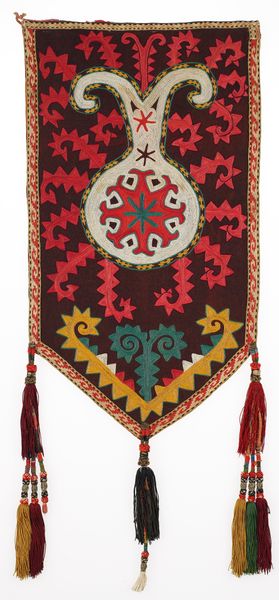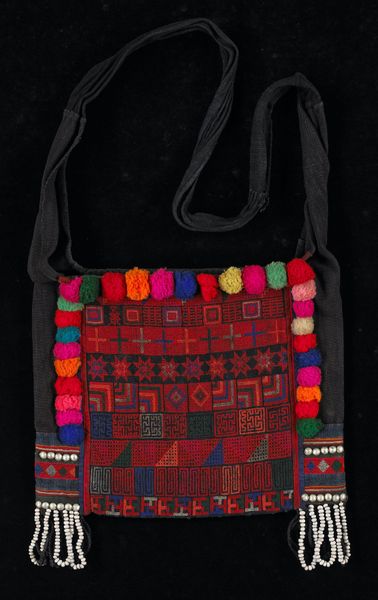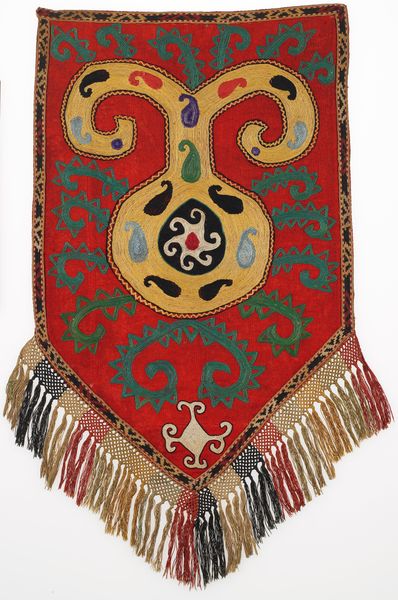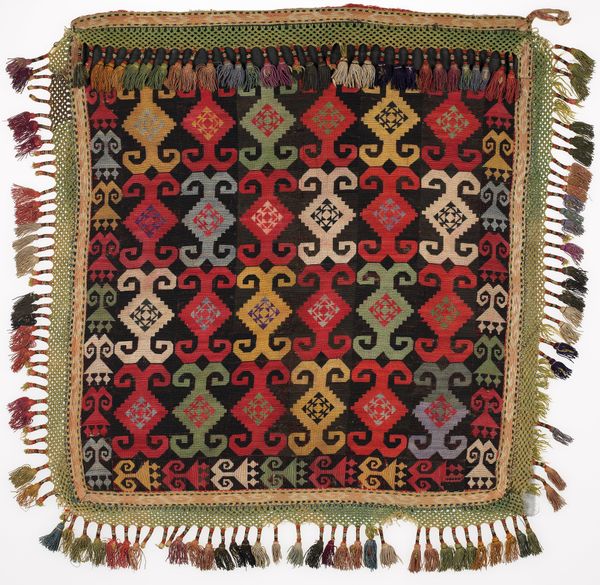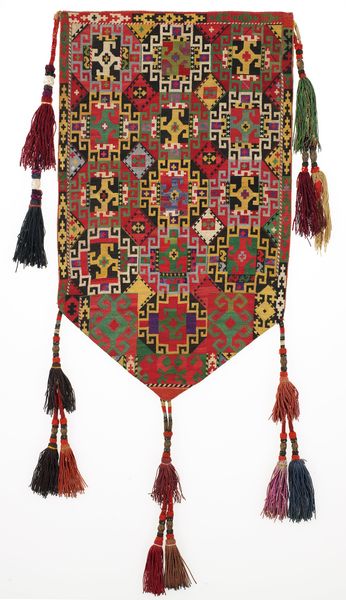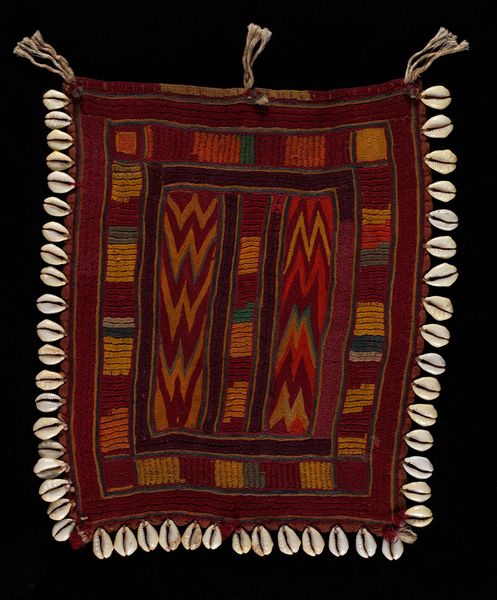
fibre-art, silk, weaving, textile, cotton
#
pattern heavy
#
fibre-art
#
silk
#
weaving
#
textile
#
fashion and textile design
#
ethnic pattern
#
geometric
#
repetition of pattern
#
regular pattern
#
pattern repetition
#
cotton
#
islamic-art
#
textile design
#
beaded
#
layered pattern
#
combined pattern
Dimensions: 9 1/16 x 6 5/8 in. (23.02 x 16.83 cm) (without tassels or cord)
Copyright: Public Domain
Curator: Here at the Minneapolis Institute of Art, we have a beautiful Turkoman bag, dating from the late 19th to early 20th century. Look at the striking geometric patterns woven into the textile. Editor: It immediately strikes me as vibrant. The reds, oranges, and deep blues create this feeling of energy. And those tassels, dangling like jewels—it’s a feast for the eyes. Curator: The craftsmanship involved is really quite intricate. Turkoman textiles, crafted by nomadic peoples in Central Asia, played crucial roles in their social and economic life. These bags weren’t just for carrying items; they were symbolic representations of tribal identity and status. Editor: And those patterns? I wonder if they carry particular cultural significance. The diamonds, the stars... I imagine each woven element tells a story, maybe about the maker's family, beliefs, or even hopes for the future. Were they intended to signal social standing? Marital status? We can imagine how this bag might embed complex intersectional codes. Curator: Absolutely. Textiles were essentially woven archives. The regularity and repetition you see isn't accidental; it’s part of a larger visual language used to convey cultural information and beliefs across generations. These patterns weren't simply decorative; they acted as visual anchors, reaffirming Turkoman identity. Editor: I also can't help but think about the women artisans who created it. Considering gendered labour roles, it is vital to appreciate the female artisans whose skilled hands carefully knotted each design. It speaks to their artistic and intellectual contributions that often went uncredited in patriarchal societies. The time and dedication it must have taken to create a piece like this! Curator: It's true. Textile production was generally women's work, and through these skills, they gained a form of economic and social influence, using the visual medium to exert their creativity and express their experiences in a world where many other outlets were closed to them. Editor: I think what resonates most with me is that this 'bag' is so much more. It represents stories and heritage woven into its very fiber. It transforms everyday utility into something deeply meaningful. Curator: Indeed. An object like this, it gives us the ability to touch the lives and see through the eyes of women artisans in Turkoman culture, and helps to illuminate how global histories intertwine.
Comments
No comments
Be the first to comment and join the conversation on the ultimate creative platform.
